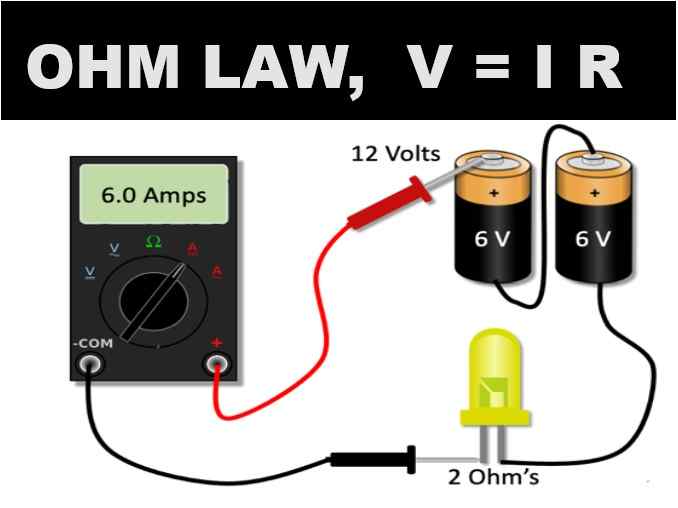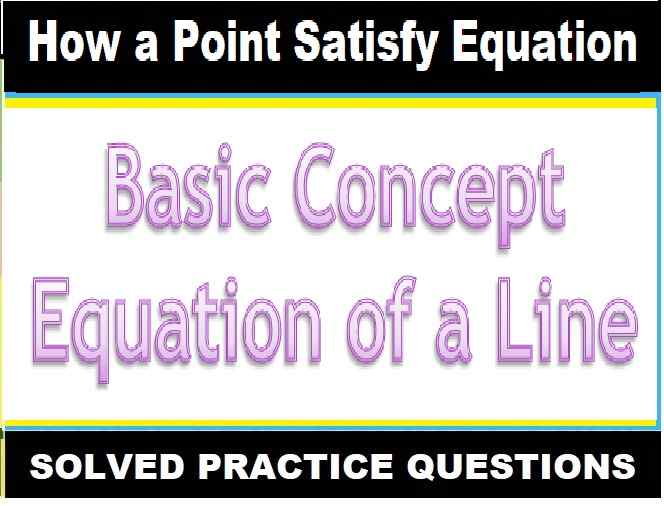Strategies for Enhancement in Food Production MCQs for ISC Class 12 Biology. These MCQs / Objective Type Questions is based on latest reduced syllabus according 2021-22 session on bifurcated pattern. Main motto of MCQ Type Question is cracking the next upcoming Sem-2 exam of council. Visit official website CISCE for detail information about ISC Class-12 Biology.
Strategies for Enhancement in Food Production MCQs

| Board | ISC |
| Class | 12th (XII) |
| Subject | Biology |
| Chapter | Strategies for enhancement in Food Production |
| Syllabus | on bifurcated syllabus (after reduction) |
| Session | 2021-22 |
| Bifurcated | Sem-2 |
| Topic | MCQs / Objective Type Question |
MCQs Strategies for Enhancement in Food Production ISC Class 12 Biology
Question 1: Several South Indian states raise 2-3 crops of rice annually. The agronomic feature that makes this possible is because of:
(a) shorter rice plant
(b) better irrigation facilities
(c) early yielding rice variety
(d) disease-resistant rice variety.
Answer : (c) early yielding rice variety
Question 2: Inbreeding is carried out in animal husbandry because it
(a) increases homozygosity
(b) increases heterozygosity
(c) improves the breed
(d) increases vigour
Answer : (a) increases homozygosity
Question 3: Which of the following is incorrectly matched ?
Disease Causative organism
(a) Black rot of crucifers Bacteria
(b) Brown rust of wheat Fungi
(c) Late blight of potato Virus
(d) Red rot of sugarcane Fungi
Answer: (c) Late blight of potato Virus
Question 4: Which of the following dieases is caused by bacteria ?
(a) Tobacco mosaic
(b) Black rot of crucifers
(c) Red rot of sugarcane
(d) Lata blight of potato
Answer: (b) Black rot of crucifers
Question 5: Select the incorrect statement(s) (w.r.t. semi-dwarf varieties of wheat)
(a) These varieties were derived from IR-8
(b) Developed at International Centre for Wheat and Maize Improvement in Mexico
(c) Developed by Norman E. Borlaug
(d) Responsible for green revolution
Answer: (a) These varieties were derived from IR-8
Question 6: International Rice Research Institute (IRRI) is situated at
(a) Philippines
(b) Taiwan
(c) Canada
(d) Mexico
Answer: (a) Philippines
Question 7: Taichung Native I variety of rice was developed in which of the following country?
(a) Taiwan
(b) Japan
(c) Mexico
(d) None of these
Answer: (a) Taiwan
Question 8: Black rust of wheat is caused by
(a) Puccinia
(b) Albugo
(c) Ustilagp
(d) Cystopus
Answer: (a) Puccinia
Question 9: Which of the following is incorrectly paired ?
(a) What – Himgiri
(b) Milch breed – Sahiwal
(c) Rice – Ratna
(d) Pusa Komal – Brassica
Answer: (d) Pusa Komal – Brassica
Question 10: The yellow mosaic virus-resistant variety “Parbhani Kranti” belongs to
(a) bhindi
(b) barley
(c) chilli
(d) cauliflower
Answer: (a) bhindi
Question 11: Inbreeding depression
(a) usually increases fertility only.
(b) usually reduces productivity only.
(c) usually reduces fertility and productivity.
(d) usually increases fertility and productivity.
Answer : (c) usually reduces fertility and productivity.
Question 12: P-1542 variety of the plant belongs to
(a) Pea
(b) Brassica
(c) Maize
(d) Wheat
Answer: (a) Pea
Question 13: Which one of the following is a new breed of sheep developed in Punjab by crossing Bikaneri ewes and Marino rams?
(a) Hisardale
(b) White Leghorn
(c) Assel
(d) Langshan
Answer : (a) Hisardale
Question 14: Maize generates resistance against stem borers by having
(a) low aspartic acid, high nitrogen and sugar content
(b) low aspartic acid and sugar but high nitrogen content
(c) high aspartic acid and nitrogen but low sugar content
(d) high aspartic acid, low nitrogen and sugar content
Answer: (d) high aspartic acid, low nitrogen and sugar content
Question 15: The agriculture sector of India employs about
(a) 50 percent of the population
(b) 70 percent of the population
(c) 30 percent of the population
(d) 60 percent of the population
Answer: (d) 60 percent of the population
Question 16: 33 percent of India’s (Gross Domestic Product) comes from
(a) industry
(b) agriculture
(c) export
(d) small-scale cottage industries
Answer: (b) agriculture
Question 17: Meristem culture is the cultue of
(a) axillary or apical shoot meristems
(b) anthers
(c) plant seeds
(d) young embryos
Answer: (a) axillary or apical shoot meristems
Question 18: The enzymes required to obtain protoplast from a plant cell are
(a) cellulase
(b) chitinase
(c) pectinase
(d) both (a) and (c)
Answer: (d) both (a) and (c)
Question 19: Sonalikea and Kalyan Sona are varieties of
(a) wheat
(b) rice
(c) millet
(d) tobacco
Answer: (a) wheat
Question 20: The chances of contracting bird flu from a properly cooked (above 100°C) chicken and egg are
(a) very high
(b) high
(c) moderate
(d) none
Answer: (d) none
Question 21: A group of animals which are related by descent and share many similarities are referred to as
(a) breed
(b) race
(c) variety
(d) species
Answer: (a) breed
Question 22: A branch of science that deals with the maintenance of hives of honeybees for the production of honey is called
(a) aquaculture
(b) pisciculture
(c) apiculture
(d) sericulture
Answer : (c) apiculture
Question 23: Zoological name of Indian buffalo is:
(a) Bubalus bubalus
(b) Bos indicus
(c) Bos taurus
(d) Gallusgallus
Answer : (a) Bubalus bubalus
Question 24: Inbreeding is carried out in animal husbandry because it
(a) increases vigour
(b) improves the breed
(c) increases heterozygosity
(d) increases homozygosity
Answer: (d) increases homozygosity
Question 25: Agriculture sector of India, employs
(a) 62% of population
(b) 30% of pupulation
(c) 70% of population
(d) 50% of population
Answer: (a) 62% of population
Question 26: Which one of the following is not a fungal disease?
(a) Rust of wheat
(b) Smut of Bajra
(c) Black rot of crucifers
(d) Red rot of sugarcane
Answer: (c) Black rot of crucifers
Question 27: Fungicides and antibiotics are chemicals that
(a) enhance yield and disease resistance
(b) kill pathogenic fungi and bacteria, respectively
(c) kill all pathogenic microbes
(d) kill pathogenic bacteria and fungi respectively
Answer: (b) kill pathogenic fungi and bacteria, respectively
Question 28: The biggest constraint of plant breeding is
(a) availability of desirable gene in the crop and its wild relatives
(b) infrastructure
(c) trained manpower
(d) transfer of genes from unrelated sources
Answer: (a) availability of desirable gene in the crop and its wild relatives
Question 29: The best milk breed in the world is:
(a) Chittgong
(b) Deoni
(c) Holstein-Friesian
(d) Sindhi
Answer : (c) Holstein-Friesian
Question 30: Lysine and tryptophan are
(a) proteins
(b) non-essential amino acids
(c) essential amino acids
(d) aromatic amino acids
Answer: (c) essential amino acids
Question 31: Micropropagation is
(a) propagation oif microbes in vitro
(b) propagation of plants in vitro
(c) propagation of cells in vitro
(d) growing plants on smaller scale
Answer: (b) propagation of plants in vitro
Question 32: Hairy leaves of many plants are associated with
(a) resistance to insect pests
(b) resistance to viruses
(c) resistance to fungi
(d) resistance to bacteria
Answer: (a) resistance to insect pests
Question 33: Resistance to jassids in cotton plants and to cereal leaf beetle in wheat plants is due to
(a) biochemical characters
(b) physiological characters
(c) morphological characters
(d) none of these
Answer: (c) morphological characters
Question 34: Protoplast is
(a) another name for protoplasm
(b) an animal cell
(c) a plant cell without a cell wall
(d) a plant cell
Answer: (c) a plant cell without a cell wall
Question 35: Which one of the following products of apiculture is used in cosmetics and polishes ?
(a) Honey
(b) Oil
(c) Wax
(d) Royal jelly
Answer: (c) Wax
Question 36: More than 70 percent of livestock population is in
(a) Denmark
(b) India
(c) China
(d) India and China
Answer: (d) India and China
Question 37: A plant cell without cell wall is called
(a) proplast
(b) protoplast
(c) nucleoplasm
(d) explant
Answer: (b) protoplast
Question 38: A somatic hybird between potato and tomato is named as
(a) bomato
(b) mopato
(c) pomato
(d) topamo
Answer: (c) pomato
Question 39: India is mainly an agricultural country. Agriculture accounts for approximately ______ of India’s GDP
(a) 33%
(b) 40%
(c) 42%
(d) 38%
Answer: (a) 33%
Question 40: _____ is the root of any plant breeding programme
(a) Genetic variability
(b) Mutation
(c) Micropropagation
(d) Testing and commercialisation of new cultivars
Answer: (a) Genetic variability
Question 41: In honey, the main constituent is
(a) calcium
(b) sugar
(c) protein
(d) water
Answer: (b) sugar
Question 42: Turnip mosaic disease is caused by
(a) bacteria
(b) viruses
(c) nematodes
(d) fungi
Answer: (b) viruses
Question 43: To isolate protoplast, one needs
(a) pectiriase
(b) cellulase
(c) both pectinase and cellulase
(d) chitinase
Answer: (c) both pectinase and cellulase
Question 44: Which one of the following is a marine fish ?
(a) Rohu
(b) Hilsa
(c) Catla
(d) Common Carp
Answer: (b) Hilsa
Question 45: When breeding is between animals of the same breed it is called ______________, while crosses between different breeds are called
(a) out-breeding; inbreeding
(b) inbreeding; out-breeding
(c) out breeding; cross-breeding
(d) cross-breeding; inbreeding
Answer : (b) inbreeding; out-breeding
Question 46: Which of the following dieases is caused by virus ?
(a) Tobacco mosaic
(b) Late blight of potato
(c) Turnip mosaic
(d) Both (a) and (c)
Answer: (d) Both (a) and (c)
Question 47: The ‘mule’ is the result of
(a) inbreeding depression
(b) out-breeding
(c) cross-breeding
(d) inter-specific hybridization
Answer : (d) inter-specific hybridization
Question 48: MOET stands for
(a) Multiple Ovulation and Embryo Transfer Technology
(b) Multiple Ovulation Energy Transport Technology
(c) Method of Ovulation Energy Transfer Technology
(d) Method of Ovulation Energy Transport Technology
Answer : (a) Multiple Ovulation and Embryo Transfer Technology
Question 49: Which of the following stage is transferred to surrogate mothers in livestock breeding experiments?
(a) Unfertilized eggs
(b) Fertilized eggs
(c) 8 to 32 celled embryo
(d) Frozen semen
Answer : (c) 8 to 32 celled embryo
Question 50: In virus-infected plants the meristematic tissues in both apical and axillary buds are free of virus because:
(a) the dividing cells are virus resistant
(b) meristems have anti-viral compounds
(c) the cell division of meristems is faster than the rate of viral multiplication
(d) viruses cannot multiply within meristem cell (s).
Answer : (c) the cell division of meristems is faster than the rate of viral multiplication
–: End of MCQs Strategies for Enhancement in Food Production :–
-: also visit :-
- ISC Sem-2 Question Bank Class-12
- Sem-2 ISC Specimen Paper for Class-12
- ISC Class-12 Textbook Solutions ,Syllabus, Solved Paper
- Previous Year Question Paper for ISC Class-12
Please share with your ISC friends if it is helpful
Thanks


